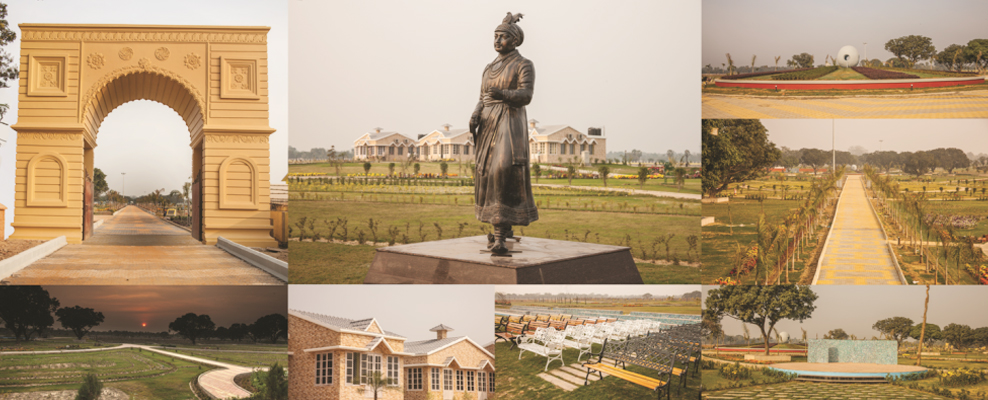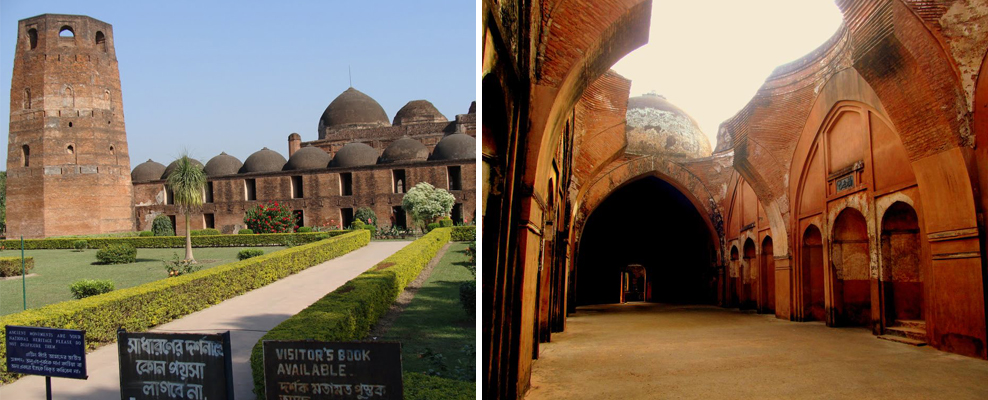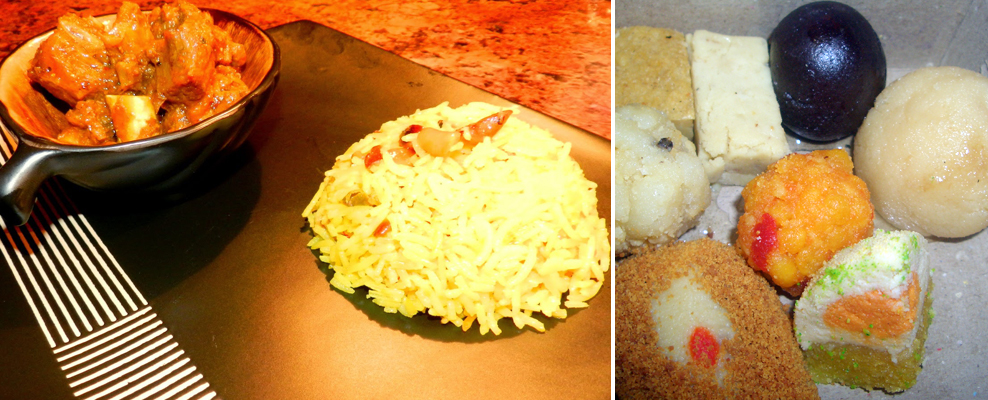“I will get the best chicken sandwiches from Coffee House in College Street,” Rajesh Dutt of the famous family of Bholanath Dutt and Sons, paper Merchants in Kolkata said.
Early morning we boarded the Hazarduari Express from Kolkata station in north part of the city. It was an air-conditioned chair car and very comfortable in this summer heat. The four-hour journey was enjoyable too as we started with coffee and the chicken sandwiches and chatted with each other until we reached Murshidabad at 10.25 am.
At the station we were greeted by friendly Toto (electric operated rickshaw) drivers. We chose a young man called Rocky Shah who turned out to be a very good guide to the city.
After we checked into Hotel Indrajit just a few yards away, we ordered lunch which consisted of Bhaja moog daal (fried lentils with spices) with fried vegetables and the surprise was the extremely tasty Pomfret curry with mustard and green chilies!

Following our meal, Rocky who is not only a Toto driver but a historian-cum-guide took us out for a ride. First we went to the Motijheel Park. Located in close proximity to our hotel we arrived in a short time on an enchanting evening. There are cottages at the Park which you can book and stay in. As you enter Motijheel, there is a famous cannon used during the Battle of Plassey between the British and Nawab Siraj ud-Daulah. The entire park is lit up and with colorful fountains all over along with a lake where you can go for a boat ride. There is also a canteen which serves snacks and cold drinks. A perfect place for lovers too!
We spent the entire evening there walking around and enjoying the pleasant environment. There were large numbers of people from all over the country who were visiting this tourist spot.
Rocky took us back to the hotel late evening. But we decided to venture out instead of having dinner at the hotel. There were many local eateries and the one we chose provided us with a nutritious and well-prepared meal. We ordered rotis, tarkha, and chicken curry. It was delicious and then topped up with rosogollas.
The next day, early morning, we went to the Katra Masjid.
Rocky narrated: “Nawab Murshid Quli Khan was the tax collector and had tortured thousands of people to collect taxes. Before he died, in repentance, he requested that he be buried below the mosque so that the people could walk over his body!”

When we went to the katra mosque we were amazed. The mosque stands on a square plinth. It is a brick built building and is surrounded by double-storied domed cells, built (as a madrasa) for those who studied the Holy Quran. The rooms can accommodate 700 Quran readers. In 1780, a traveler named William Hodges wrote about the Quran readers in his book Select Views of India. He describes the place as “a grand seminary of Musalman learning, adorned by a mosque which rises high above all the surrounding buildings“.
These rooms form a cloister to the huge courtyard in front. Four big minars stand at the four corners. These are octagonal in plan and taper upwards. The two towers or the minarets in front of the mosque are 70 feet high and 25 feet in diameter. The entire mosque is quadrangular in shape and has no pillar support at all. Each minar has a winding staircase which leads to the top and one can see a major part of the city of Murshidabad from there. At the two ends of the mosque, two minarets measuring 70 feet high, are still present but in a dilapidated condition. They had domes which were destroyed in the 1897 earthquake.
The entrance to the mosque is by fourteen flights of stairs from the east and Nawab Murshid Quli Khan has been buried under these stairs. In the mosque there is a slab embedded at the top where it is written in Arabic: “Muhammad, the Arabian, the glory of both worlds. Dust be on the head of him who is not the dust of his portal“.
From Katra after drinking tender coconut water we proceeded to Hazarduari, the seat of power of Nawab Sirajuddaulah. Today this building has been converted into a museum containing numerous rare books, weapons, paintings, rare statues, costumes, jewelry, palanquins, gold and silver objects and beautiful cut glass chandeliers. We went around with large number of visitors amazed with how the nawabs lived at that time!
Next to the Hazarduari is the Imambara which is closed throughout the year but open only during muharram. Although we could not visit it, we were informed that the original Imambara (a congregation hall) was built in 1847 but was destroyed by several fires. The current Imambara was built following the fires and is the largest one of its kind in the country.

Our next stop was the Kathgola Gardens which was built by a wealthy Jain Marwari Lakhshmipat Duggar and is the spot where the deal between the British and Mir Jafar took place! Kathgola (wood war house) acquires its name from the lumber yard that used to be functional in the area before the palace was built. It has endless gardens, ponds, a temple devoted to Adinath and a statue of Michelangelo, which are some of the marvels you will see here.
There were more places to see but as we were short of time we returned back to the hotel pretty tired on a late Sunday afternoon.
My friend Rajesh and I went out after an afternoon siesta. Following a brief shower, the weather had cooled down considerably and we took this opportunity to walk around the town, watching the beautiful scenery around the hotel area, and interacted with the locals whom we found to be very friendly and a wealth of information about their town.

After a long day of sightseeing we had fantastic dinner of Mutton Curry with Rice followed by numerous desserts at a local dhaba!
Early next morning we took the 6.11am Bhagirathi Express and were back at Sealdah by 10.25 am. Both of us were delighted with our interesting albeit brief visit and reminisced that we should once again visit Murshidabad to see the numerous tourist spots which we had missed during this trip!
